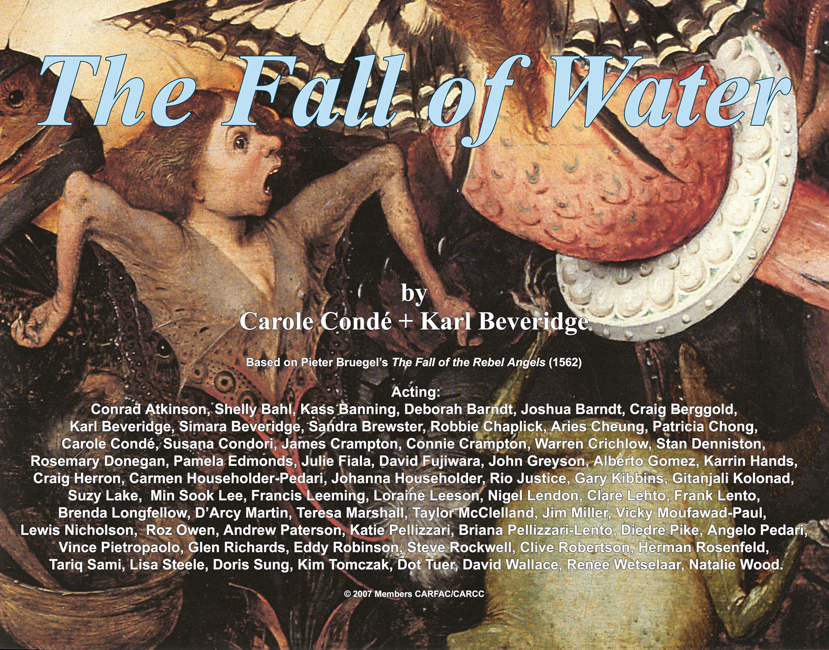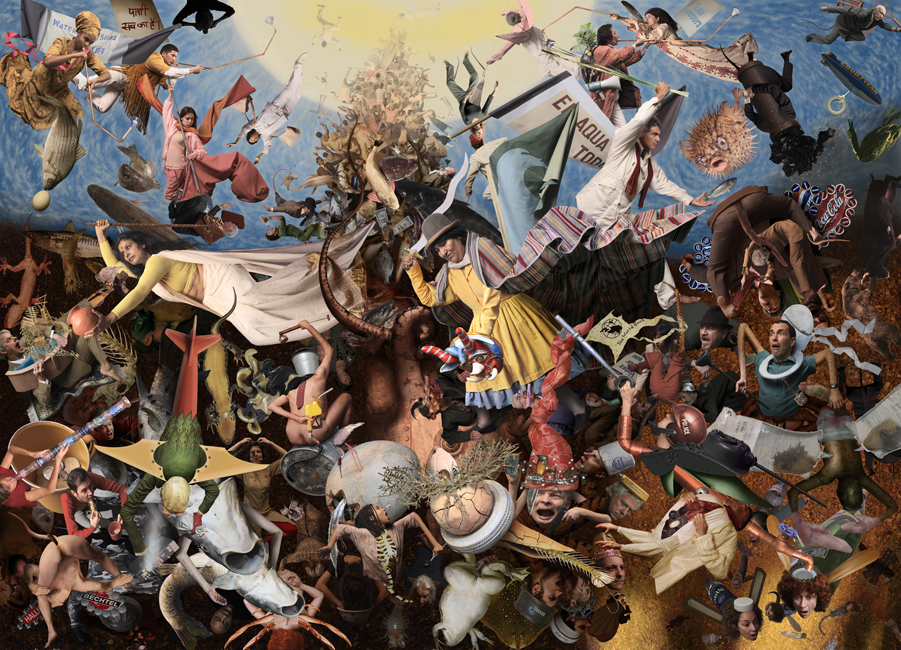The Fall of Water (2006-07) The availability of water, the source of life itself, is in crisis. And this crisis is global. The idea of the global and the problem of representing water lead the artists to look at paintings. While there are many representations of the sea and rivers, none adequately represented water as a living or symbolic entity. One painting stood out, however, even though it had little to do with water directly. It was Pieter Bruegel’s 1562 painting The Fall of the Rebel Angels, which depicts the struggle between the Archangels and Lucifer, and, in Bruegel’s time, referred to the Counter-reformation. What intrigued the artists was the liquid quality of the composition and figures.
Characters representing the global breadth of water politics have replaced the Archangels in the Bruegel painting. In the middle, replacing Saint Michael, is an Andean indigenous woman, referencing to the successful fight against water privatization in Cochabamba, Bolivia. On the left side is a South Asian woman referencing to the struggles against the damming of the Narmada River in India. On the right is a Canadian environmentalist defending Canada’s vast water resources. Activists of various nationalities and cultures have replaced the remaining angels. The abusers below cover the ground from oil companies to industrial polluters, water bottlers, dam builders, privateers, agribusiness types, the military, politicians and corporate thieves, and include dead fish, oil covered birds, drought, disease, and e-coli with the occasional unsuspecting victim floating among them.
The project was assembled digitally. Each character was photographed separately, digitally manipulated and then assembled into the final image. Some of the characters were either constructed as a prop and photographed or were created out of photographic elements.


